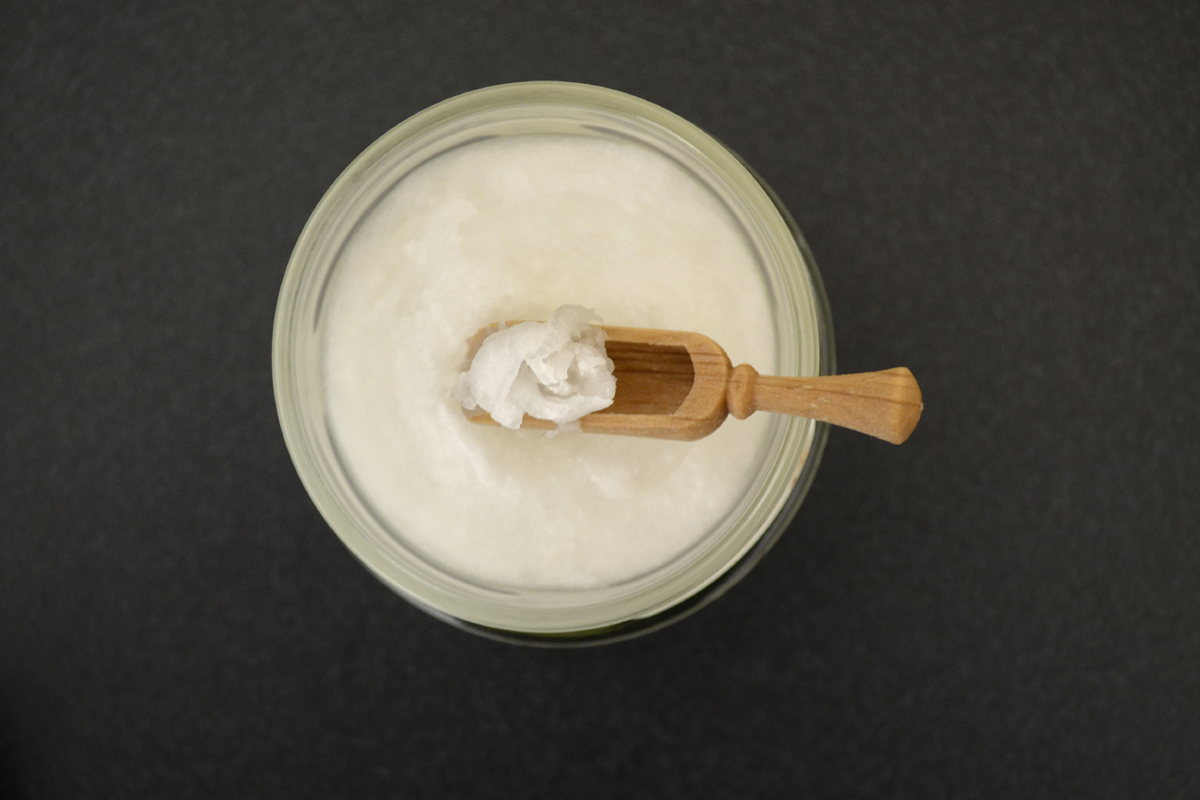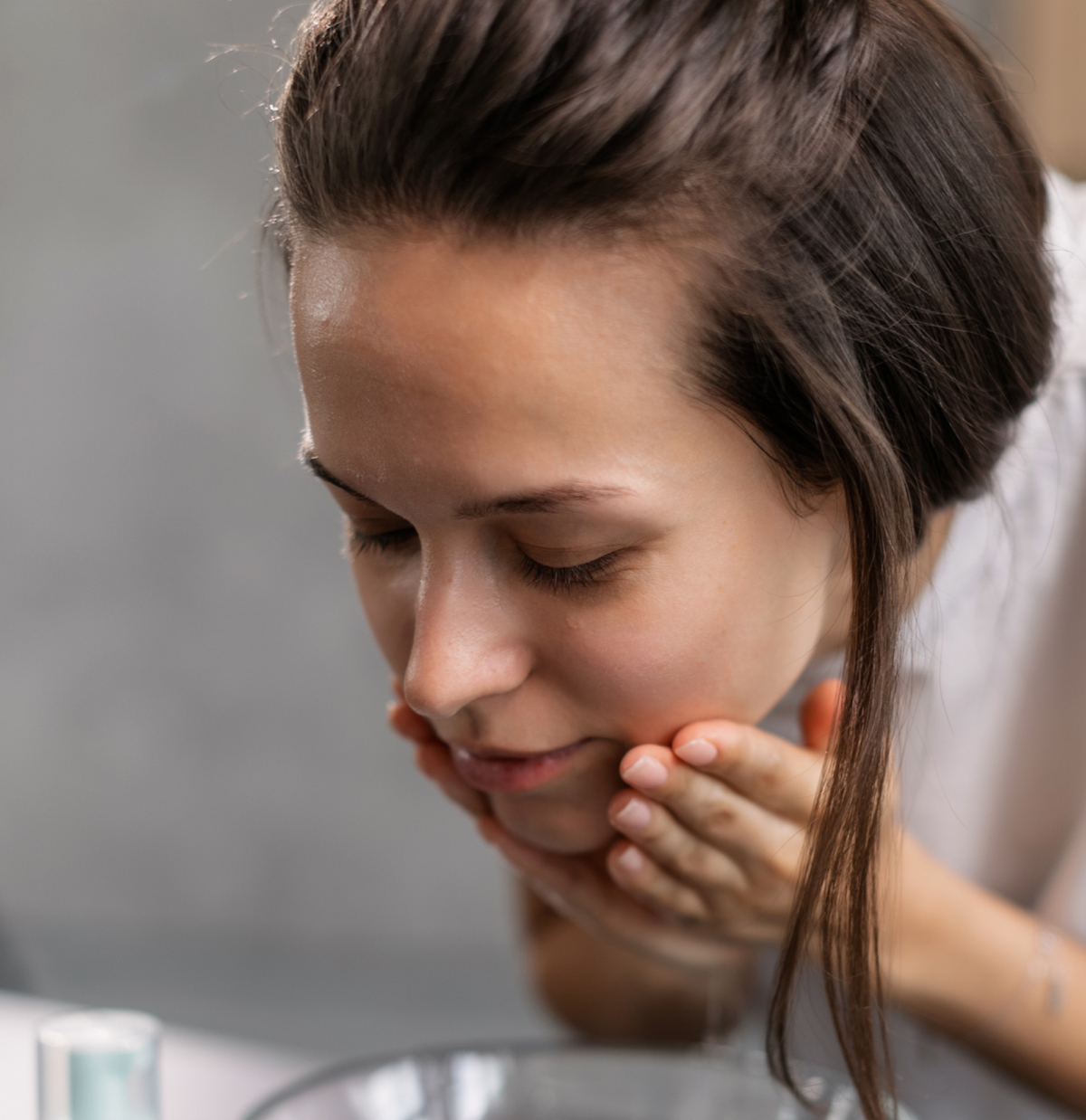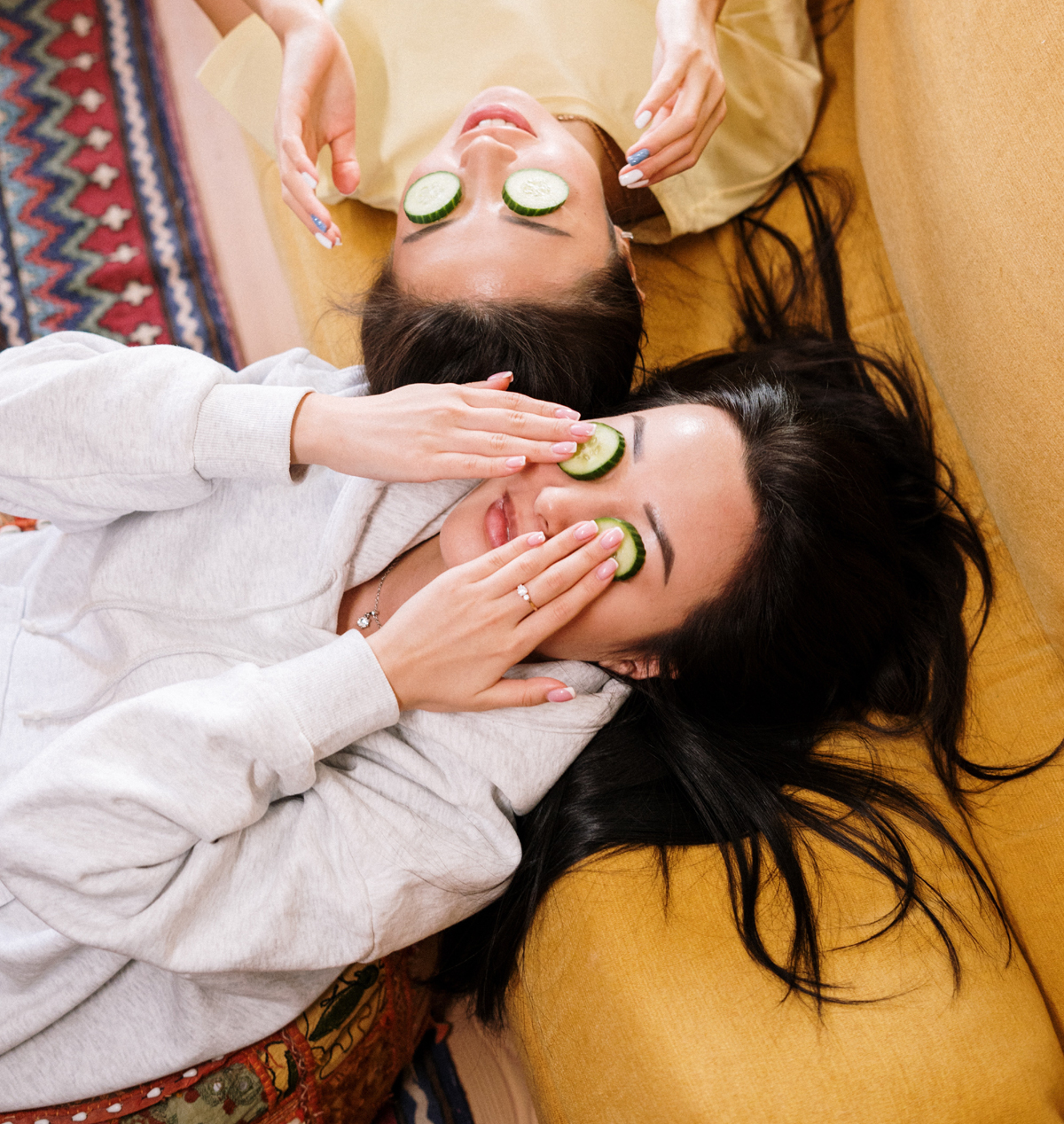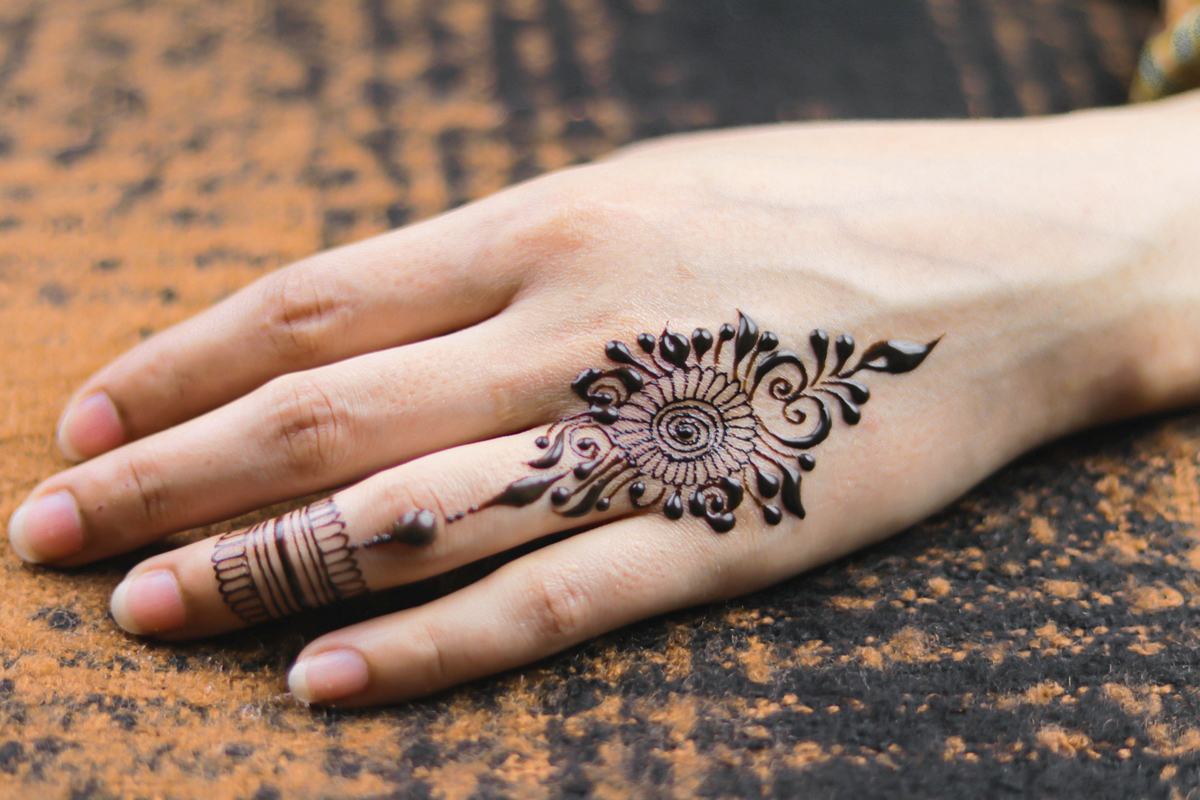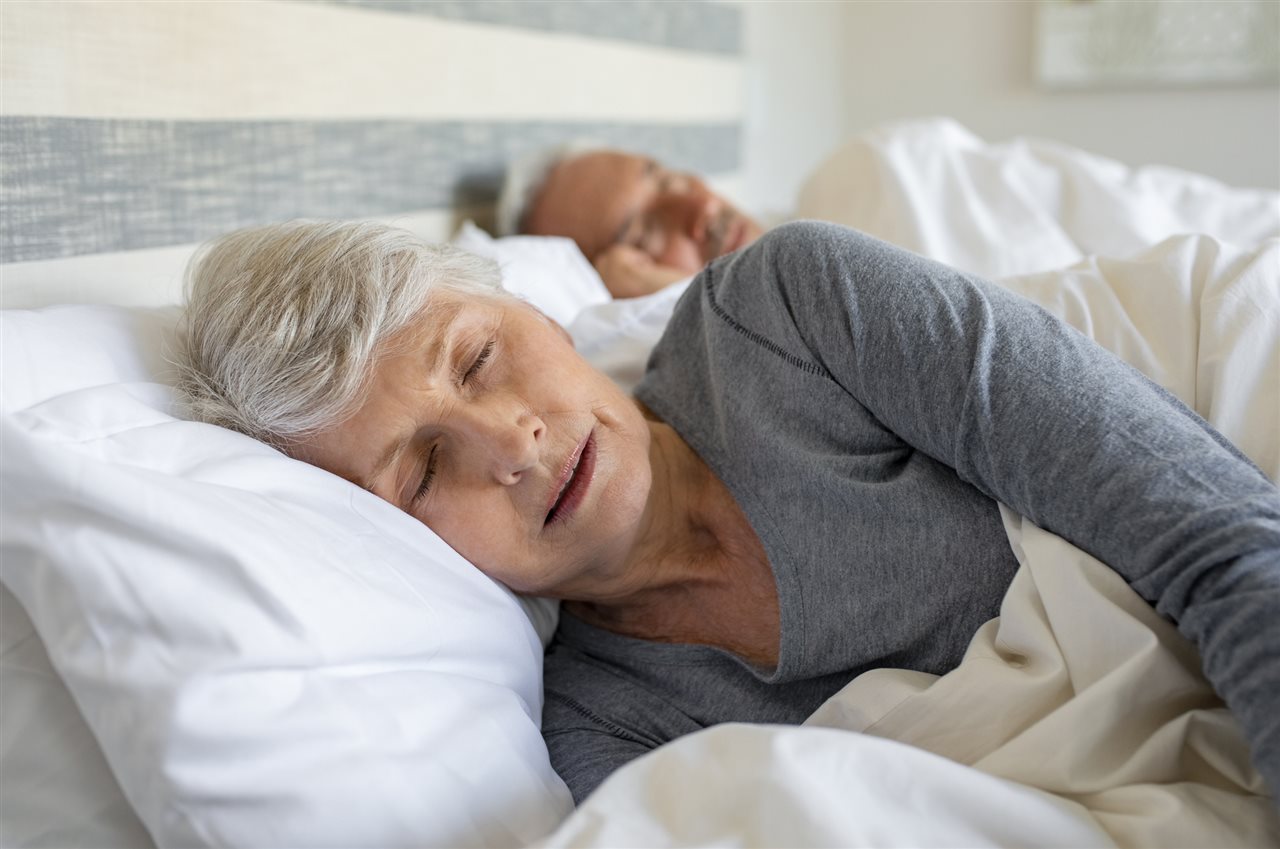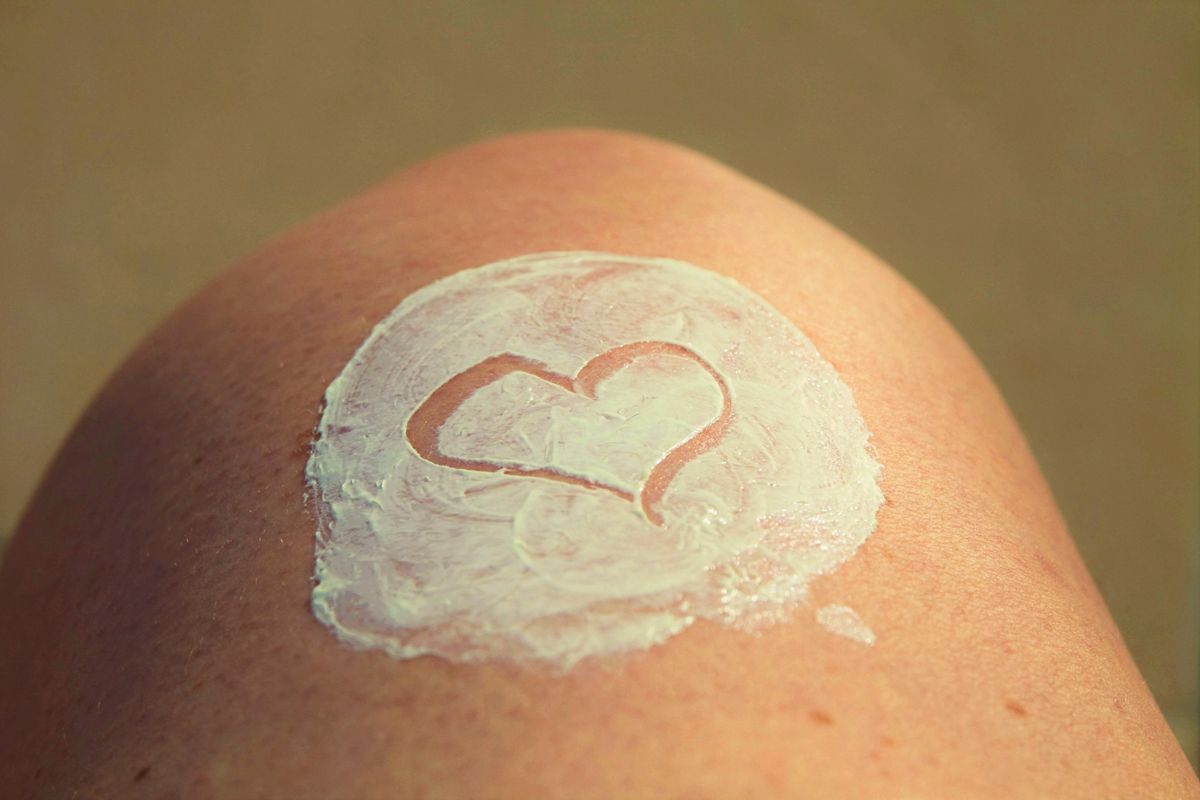The Natural Way to Prevent Wrinkles
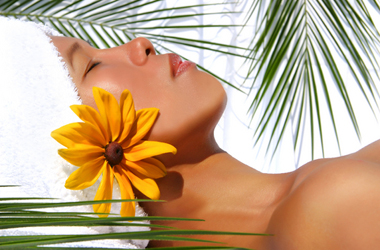
Flick through any women’s or men’s magazine and you will see dozens of full page, glossy advertisements for the latest ‘wonder youth cream’. The marketing text will boast that the cream contains some new, miracle ingredient that has a dubious pseudo-scientific name whose rejuvenating properties can be yours – for a price. Forgive my skepticism but I think these anti-aging claims owe more to the marketing agencies imagination than sound, scientific evidence. In most cases you are being asked to part with your money, and it can be a substantial amount of money, on nothing more than trust and hope.
There are literally hundreds of supposedly ‘anti-aging’ creams and lotions to choose from all claiming to be ‘the one’ you need, so how can you be sure that those special ingredients do what they actually say they do and the cream is worth the money? You can’t, unless you spend weeks, even years and an awful lot of your hard earned money testing every single one for yourself or doing extensive research into the adverts claims and product ingredients.
One way to avoid all that time and expense is to opt for a product that contains ingredients that have been used for dozens, hundreds, even thousands of years to help keep the skin of men and women soft and youthful. Why? Because generation after generation has born witness to and recorded down their beneficial affects. They have done all the hard work for you. The results are proven. After all, if these substances didn’t work, men and women down the ages would not have kept on using them.
So what should you be looking for in an anti-aging cream that has at least a chance of working for you?
For a start you are going to have to avoid 99.9% of all the creams you can buy at your local drugstore or chemist i.e. the mass market products. Why? Because more often than not the major ingredients in these products are cheap and plentiful water and mineral oil. But you won’t find them listed as such on the back of the pot but instead called, for reasons known only to the cosmetic industry, under the pseudo Latin names of Aqua and Liquidium Pariffinium.
There’s no doubt these creams do have a moisturizing effect as they use the mineral oil to hold the water against your skin which stops it drying out but that’s all they do, sit on top of your skin or at the very most, get partially absorbed into the epidermis, the thin, upper most layer of your skin.
That’s because the molecules in mineral oil are far too large to actually penetrate the epidermis and penetrate deeply into the lower, supporting layer (Dermis) where it can actually do some good. Any rejuvenating effects you may have noticed using these kinds of cream is, I suspect, probably due to the effects of massaging the skin which promotes improved circulation to your skin, rather than the cream itself.
So, having dismissed most of the mass market products, what you are looking for is a natural substance that not only has been proven over the years to help keep the skin looking younger for longer, but one that has been proven to actually penetrate the skin deeply and helps to rejuvenate it from within.
Luckily there are four natural oils that do just that, so if you find any cream or lotion containing these anti-aging substances, you are onto a winner. These oils are not like the heavy, greasy vegetable or mineral oils you find in most modern cosmetics, in fact, their texture is so fine and light they act more like water than oil and are the essential
ingredient in a branch of so-called ‘complimentary’ or ‘alternative’ medicine called Aromatherapy.
Although the word Aromatherapy was only coined fairly recently, it has it’s origins in the most ancient of healing practices, for the plants from which we derive what are termed ‘essential oils’ has been used in one form or another as long as man has existed on the planet.
Before we take a closer look at Aromatherapy, let me first take you on a brief history of herbal, or plant based medicine, if only to demonstrate that the benefits you will enjoy from using these oils is not some pet theory I dreamed up, but based on evidence gathered from all four corners of the world since the dawn of early civilization.
No-one is quite sure how humans first discovered that what was growing all around them could also help them cure their illnesses or ward off disease, but it’s likely early hominids made the discovery by accident, after observing that some of the roots and berries they gathered for food also made them feel better or helped heal wounds more quickly.
They may also have taken note of the plants sick animals chose to eat and be curious as to why the creature suddenly appeared to regain its health not long afterwards and tried it on themselves. Perhaps, by design or accident, certain leaves, stems and flowers were burnt in the fire or fell into the cooking pot and were breathed in or ingested in ignorance but their effects brought enlightenment
Such herbal wisdom would have been of great importance to primitive tribes who depended on their immediate environment for survival. Once discovered, it is likely that such knowledge was handed down first orally and then, as language became more sophisticated, by the written word.
Every great civilization we have known, be it the Egyptians, Greeks, Romans, Chinese or South Americans, developed to one degree or another, a sophisticated herbal law from which healers of the time made pills, powders, teas, ointments and pastes from a wide variety of local trees, plants, animal and mineral substances.
Papyrus documents dating from around 2,890 BC show that the ancient Egyptians were using aromatic plants for medicine, beauty and to embalm their dead 3000 years before the birth of Christ. They utilized a wide variety of now familiar products such as castor oil, coriander, cumin, garlic, grapes and water melon for the treatment of all manner of common ailments.
The Egyptians invented a rudimentary distillation machine that allowed for the crude extraction of Cedarwood oil. It is also thought by some that Persia and India may have also invented crude distillation machines to extract oils from plants, but very little is known.
Oils of Cedarwood, clove, cinnamon, nutmeg and myrrh were used by the Egyptians to embalm the dead. When a tomb was opened in the early 20th century, traces of the herbs were discovered with intact portions of the body. The scent, although faint, was still apparent. Although the Cedarwood the Egyptians used was distilled by a crude distillation process, the other oils the Egyptians used were most likely infused oils.
The Egyptians also used infused oils and herbal preparations for spiritual, medicinal, fragrant and cosmetic use. It is thought that the Egyptians coined the term perfume, from the Latin per fumum which translates as ‘through the smoke’. Egyptian men of the time used fragrance as readily as the women. An interesting method that the men used to fragrance themselves was to place a solid cone of perfume on their heads. It would gradually melt and would cover them in fragrance.
Further to the east, the sophisticated Babylonians were well versed in plant medicine, planting gardens of therapeutic cucumber, coriander, juniper, myrrh, pumpkins, garlic, onions, fennel, saffron, thyme, mustard and many others.
Perhaps one of the most famous and influential of ancient civilizations was the Greek Empire. More than any other, this ancient world power has done more to shape the modern world than any other. Many of the concepts of civilized behavior and government, such as democracy, were devised in ancient Greece. Modern medicine too owes much to this antiquarian society. The most famous and revered of all Greek physicians was Hippocrates, born about 460 BC.
In his writings he catalogues a vast number of medicinal plants still used for their therapeutic benefits, such as rhubarb, quince and Myrrh. We all know the Christian story of the three wise men from the east that carried gold, Frankincense and Myrrh to the infant baby Jesus. Myrrh was considered a very valuable medicinal plant long before the birth of Christ and was well known to Hippocrates.
In his time, Greek soldiers carried Myrrh into battle for the treatment of wounds. Just as modern herbalists do today, Hippocrates entreated people to use these medicinal plants as a preventative medicine when he said “Let your medicine be your food and your food be your medicine.”
Thousands of years after his death, he is still known today by medical students all over the world as the ‘father of all medicine’. Such is this man’s importance in the history and development of modern medical practice that those same students studying to be doctors in many different countries are still required to swear allegiance to the Hippocratic Oath, binding him or her to the code of medical ethics contained in it.
In the 2nd Century A.D. another, now famous, Greek physicians by the name of Galen divided plants into various medicinal categories, a practice we still refer to as ‘Galenic’.
The Greeks learned a great deal from the Egyptians, but Greek mythology apparently credits the gift and knowledge of perfumes to the gods. The Greeks also recognized the medicinal and aromatic benefits of plants. Hippocrates practiced fumigations for both aromatic and medicinal benefit. A Greek perfumer by the name of Megallus created a perfume called Megaleion. Megaleion included myrrh in a fatty-oil base and served several purposes: (1) for its aroma, (2) for its anti-inflammatory properties towards the skin and (3) to heal wounds.
In India, ancient religious texts dating back 2000 years B.C. contain formulae and instructions for the use of plants such as cloves, ginger, pepper, sandalwood, sesame and aloes, plants that today still form the basis of India’s traditional Ayurveda medical philosophy. Ayurveda medicine uses benzoin, caraway, cardamon, clove, ginger, pepper, sandalwood, cannabis, castor oil, sesame oil, aloe and sugar cane, the first seven of which are used in aromatherapy.
Walk down any busy street in a modern city and you are sure to come across a shop that sells traditional Chinese herbal remedies. China’s herbal tradition is one of the worlds oldest with the earliest written guide thought to have been committed to paper some 4000 years ago. It was called the ‘Yellow Emperor’s Classic of Internal Medicine’ or ‘Huang Ti Nei Ching’ and contains over 8000 different plant based formulae including liquorice, peach, gentian and walnut, complimented by the other great health-giving arts of Tai Chi, Qi Gong and Acupuncture.
The Chinese may have been one of the first cultures to use aromatic plants for well-being through the use of incense burning to help create harmony and balance.
The Roman Empire built upon the knowledge of the Egyptians and Greeks. Discorides wrote a book called ‘De Materia Medica’ that described the properties of approximately 500 plants. It is also reported that Discorides studied distillation. Distillation during this period, however, focused on extracting aromatic floral waters and not essential oils.
A major event for the distillation of essential oils came with the invention of a coiled cooling pipe by an 11th century Persian called Avicenna. He invented a coiled pipe which allowed the plant vapour and steam to cool down more effectively than previous distillers that used a straight cooling pipe. Avicenna’s contributions lead to more focus on
essential oils and their benefits.
We know from surviving manuscripts that in Medieval Europe Lavender, Rosemary and Thyme, all now known to possess effective anti-bacterial and antiseptic qualities, were held to the mouth in the form of a posy that was breathed through in order to ward off diseases such as the Black Death in the 14th century.
It is believed that some perfumers may have avoided the plague by their constant contact with these natural aromatics.
By the 15th century, the amount of books written on the subject of natural medicine was growing as more and more plants were being distilled to create essential oils, such as frankincense, juniper, rose, sage and rosemary. Paracelsus, an alchemist, medical doctor and radical thinker of the time is credited with coining the term ‘Essence’. His studies
radically challenged the nature of alchemy and he focused upon using plants as medicines.
During the 16th century, one could begin purchasing oils from an “apothecary,” and many more essential oils were introduced, so much so that by the 16th and 17th centuries, perfume started to be considered an art form, and it was more clearly defined as its own field.
One of the most famous herbalists of the 16th century was Nicolas Culpeper, who produced one of the most thoroughly researched and wide ranging guides to herbal medicine of the time. ‘The Complete Herbal’ contains information on hundreds of different plants and how they could benefit the user. This authoritative reference book is still used today as a trusted source of knowledge.
During the 18th and 19th centuries, chemists continued to conduct research into the beneficial properties of plants, identifying the now familiar substances of caffeine, quinine, morphine and aspirin, the latter being one of the most widely used and popular modern pain killers. It was during this century that perfumery became a very prosperous industry. Women would have their jeweller create a special bottle to hold their treasured perfume. The 19th century was also important scientifically as major constituents of essential oils became isolated.
By the 20th century, the now well established knowledge of how to separate the active constituents of essential oils was used to create synthetic chemicals and drugs. It was believed then, as it is now, that by separating the major active constituents of plants and then using the extracted constituents alone or in synthetic form would be more beneficial therapeutically and economically. These discoveries and beliefs helped lead to “modern medicine” and synthetic fragrances, however, nearly all practitioners of ‘complimentary medicine’ will tell you that this actually weakens the beneficial effect as most natural remedies are ‘synergistic’. This means that different active ingredients of the plant must work together for the greatest benefit, as nature intended.
It was also at this time that a French chemist by the name of René-Maurice Gattefossé became interested in the use of essential oils for their medicinal use. Previously, he focused on the aromatic use of essential oils, but his interest in their medicinal use grew after an accident heightened his curiosity. While working, he burned his arm rather badly. By reflex, he plunged his burned arm into the closest liquid which happened to be a large container of lavender essential oil. The burn he suffered healed quickly and left no scar.
Gattefossé is credited with coining the now familiar term aromatherapy in 1928 in an article he wrote supporting the use of using essential oils in their whole without breaking them down into their primary constituents. Later, in 1937, Gattefossé wrote a book called Aromathérapie: Les Huiles essentielles hormones végétales that was later translated into English and named Gattefossé’s Aromatherapy. It is still in print and widely read.
Other highly respected 20th century aromatherapists include Jean Valnet, Madam Marguerite Maury, and Robert B. Tisserand. Jean Valnet is most remembered for his work using essential oils to treat injured soldiers during the war and for his book, The Practice of Aromatherapy, originally entitled Aromathérapie in French. Austrian Madam Marguerite Maury is remembered as a biochemist that avidly studied, practiced and taught the use of aromatherapy for primarily cosmetic benefit.
Robert B. Tisserand is an English aromatherapist who is responsible for being one of the first individuals to bring knowledge and education of aromatherapy to English speaking nations. He has written books and articles including the highly respected 1977 publication The Art of Aromatherapy – the first aromatherapy book published in English.
From the late 20th century and on into the 21st century, as the limitations and unwanted side effects of mainstream medicine have become more and more evident, the general public have shown a growing interest in more natural medicinal products, including essential oils, for therapeutic, cosmetic and aromatic benefit. The use of essential oils
never ceased, but the scientific revolution minimized the popularity and use of essential oils in one’s everyday life. Today’s heightened awareness regarding the use of synthetics coupled with the increased availability of aromatherapy information within books and the Internet has refuelled the use of essential oils for therapeutic, cosmetic, fragrant and spiritual use.
So what exactly is aromatherapy?
In brief, aromatherapy is the use of volatile plant oils, including essential oils, for psychological and physical well-being. The essential oils used in aromatherapy are what give the plants from which they are extracted their characteristic odour or flavour. Essential oils are found in various parts of the plants such as the seeds, flowers, bark or leaves and it can take many pounds of plant material to make up just one tiny bottle of concentrated oil. The natural chemical composition of each essential oil differs according to the plant from which it is extracted and therefore the therapeutic benefits of each oil can also differ.
One thing all essential oils have in common is their ability to be readily absorbed by the skin. That’s because their unique molecular structure allows them to pass through the cells that make up the outer, semi permeable layers of the skin and into the body where they can have beneficial effects.
Here’s an interesting experiment you might like to try to prove this to yourself. Garlic has been used medicinally for nearly 5000 years and for good reason. Its unique anti-viral and anti-bacterial chemical makeup means it is one of the most versatile of herbal remedies that is said to help treat many common ailments including blood pressure, coughs and cold, acne, asthma and many others.
Garlic oil also contains essential oils. Break open a capsule of the oil and massage it into your skin, somewhere on your body. Within a few hours you should be able to smell the garlic on your breath without ever having eaten it! That’s because the oils have been absorbed through your skin and have made their way around your body to the respiratory system. Be careful though, garlic oil has been known to irritate the skin in sensitive people.
Another thing all essential oils have in common is that they are to a lesser to greater extent, all of them contain naturally anti-bacterial and antiseptic chemicals, so using a cream or lotion containing any essential oil will go some way to help keep spots and pimples at bay. The most powerfully antiseptic of all the essential oils is Tea Tree.
So now let’s take a closer look at the four oils I believe have been shown to be particularly beneficial to skin health and beauty. I’ve been using them for years and my friends have always said I do not look my age, so here’s my secret anti-aging recipe.
The first of these anti-aging oils is Frankincense. Pale yellow or green in colour, Frankincense comes from a small tree called Boswellia Carterii – a native to North Africa and some of the countries of the Middle East. When the bark of the tree is damaged or cut, the tree exudes a resin from which this essential oil is extracted. As mentioned earlier, Christians believe that 3 “wise men from the east” came to worship the newly born Jesus and brought the gifts of Gold, Frankincense and Myrrh.
In those times, Frankincense was so precious; it was valued almost as much as gold and so was indeed a very great gift. Many ancient cultures burned it as part of their religious rituals; perhaps because it’s woody, spicy and lemony aroma is known to have a calming effect and so may aids religious or spiritual contemplation and meditation.
The ancient Egyptians used it both in religious practice and to embalm their dead because the oil has always been known to have a remarkable preserving effect on the skin. You only need look at how well preserved the bodies of some of the ancient King of Egypt are after thousands of years to realize Just take at how why it is still well known as a wonderful preserver for the skin and used in one of the more popular contemporary natural anti-aging creams!
In modern skin care Frankincense is known to be an excellent and effective rejuvenating tonic for skin of all ages, it’s remarkable properties helping to tone up slack facial skin, prevent the formation of wrinkles and reduce those any creases already there. Its excellent moisturizing properties also mean it is very effective in restoring dry or chapped
skin. Those in their teens, twenties or thirties who do not yet show any sign of their age may still find it a great preventative treatment to preserving their youthful glow whilst the more mature may find it to be a wonderful tonic for a tired visage.
Frankincense contains monoterpene compounds which give the oil natural antiseptic and anti-inflammatory properties. No wonder then that in ancient times, long before the advent of modern, synthetic antiseptics, it was used to fumigate the sick. Today users will find those same germ-killing and healing properties useful for the treatments of skin ulcers, scar tissue, wounds and inflammation.
The next essential oil no skin should be without is called Neroli. Neroli is extracted from the flowers of the Bitter Orange or Seville Orange, is deep brown in colour and has a bitter sweet aroma thought to be one of the most beautiful of all the essential oils. No surprise then that it is widely used for commercial perfumes. The name is thought to be named after an Italian princess called Anne-Marie de la Tremoille, Countess of Nerola who used this oil both as a perfume and to scent her bath water. It takes about 1000 lbs of orange blossoms to make just 1 lb of Neroli oil.
Neroli oil contains the chemicals Pinene, limonene, Linalyl acetate, Linalol, Nerolidol, Nerol, Geraniol and Citral making it particularly soothing and helpful for aging, dry or sensitive skin. It has the special property of being able to stimulate the grown of new healthy skin cells and therefore, like Frankincense, has certain rejuvenating abilities and so can help in the treatment of scar tissue and stretch marks. Its gentle nature makes it suitable for all skin types and, like most other essential oils, it also has an antiseptic, anti-infectious effect on the skin.
The next essential skin oil vital for skin health and vitality is Lavender oil. Lavender is an evergreen woody shrub whose flowering tops yield the full flowery smelling oil. Lavender has been used therapeutically and cosmetically for thousands of years, either as an essential oil or by using the dried flowers.
The name Lavender is derived from the Latin word ‘lavera’ which means ‘to wash’. The Romans used Lavender extensively in their bath routine and it is thought it was they who brought the plant from their Mediterranean home to northern Europe where it is now widely cultivated as a cash crop. As one of the most versatile of all the oils, Lavender has been continually used for a wide variety of medicinal, beauty and hygiene purposes even when the other essential oils and aromatherapy itself fell out of favour. Some of you may remember your parents or grandparents using bags or socks filled with lavender flowers in clothes cupboard and drawers to keep their clothes fresh and the moths at away, as it is an excellent insect repellent.
You may remember from earlier in this article that Rene-Maurice Gattefosse’s, one of the early pioneers of research into essential oils, who noted Lavender’s dramatic healing abilities when he used the oil to treat a burn he sustained in his laboratory. It was this discovery that inspired him to deepen his research and later to coin the word ‘aromatherapie’.
Lavender’s complex chemical structure of Borneol, Geraniol, Linalool, Lavendulyl acetate, Linalyl acetate and Cineol, mean that it is one of the more anti-septic, anti-bacterial and analgesic oils in the aromatherapy pantheon, making it a particularly effective, gentle and soothing treatment of burns, abscesses, acne, oily skin, boils, sunburn, eczema, wounds, insect bites and stings. Lavender is also well known as one of the three most powerful oils in stimulating the growth of healthy, new skin cells and so may help to maintain a ‘fresh’ appearance.
The fourth and final essential oil your skin will thank you using is Carrot Seed. An annual or biennial herb with hairy leaves and umbels of white lacy flowers with purple centers, the name is derived from the Greek ‘Carotos’.
The familiar bright orange carrot has been used as a medicinal plant at least since the first century AD and, as the name suggests, the oil is extracted from the seeds of the plant, not the edible root we all know. The oil is a pale yellow colour and has the characteristic smell of carrots. The presence of daucol, lomonene, pinene and especially carotene, a precursor to Vitamin A. make it a very nourishing ‘skin food’. In skin care this is excellent oil. It improves the complexion due to its strengthening effect on red blood cells, adding tone and elasticity to the skin. It is said to promote more ‘youthful’ appearance by restoring tone and elasticity whilst helping to reduce wrinkles and remove ‘age’ spots. It is also said to assists in the removal of toxins and water build up in the skin giving it a fresher, firmer appearance and can be an effective treatment for such skin conditions as eczema and psoriasis.
So there you have it, my special ‘recipe’ for I believe are the four essential oils vital to keeping your skin healthy and young looking.
The Author:
http://www.eczema-psoriasis-cream.com

